Hand therapy intervention activities for Chemo-Induced Peripheral Neuropathy (CIPN)
Filed under Treatments
Blog Post Written By: Rita Steffes
Patients with CIPN may present with symptoms that include numbness, tingling, hypersensitivity to cold, loss of tactile or vibration sensitivity, decreased balance, and shooting burning pain in their hands These symptoms make it difficult for oncology patients to participate in all activities of daily living with dressing, meal preparation, writing, and texting. Research supports that intervention planning for patients with CIPN benefit from a combination of sensorimotor training, resistance training, and endurance training.
- Coin rice search with a towel covering the bowl: This enhances the patient’s sensory system and tactile awareness while being desensitized to the tactile input of the rice.
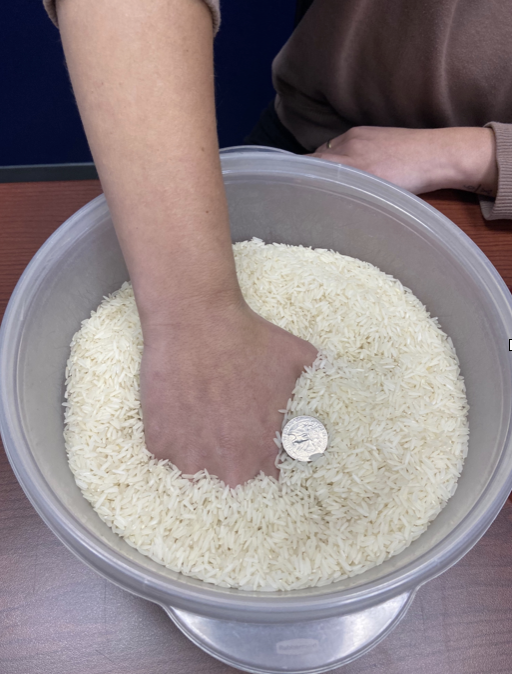
- Button book: Patients experiencing CIPN may have difficulties completing dressing tasks with buttons and zippers due to loss of tactile awareness and numbness. This activity increases fine motor coordination with sensory input from the activities materials, allowing patients to work on the functional task of buttoning and unbuttoning different sized buttons.
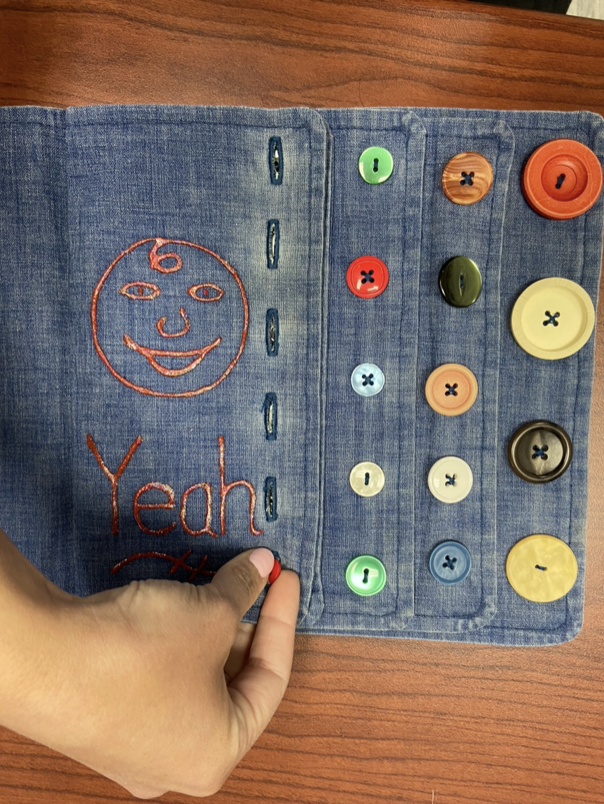
- Vibration tools: Patients may benefit from sensorimotor activities that promote vibrational input, helping to increase awareness and help with numbness and pain.
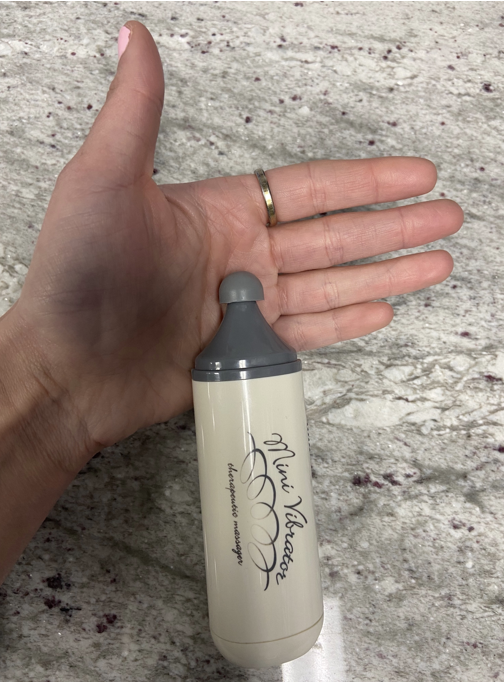
- Table sled: The patient works to push this sled back and forth promoting a push and pull motion. This activity is a great intervention for resistance training individualized for the client by easily being able to increase or decrease with weights on the sled that match the needed resistance for the patient.
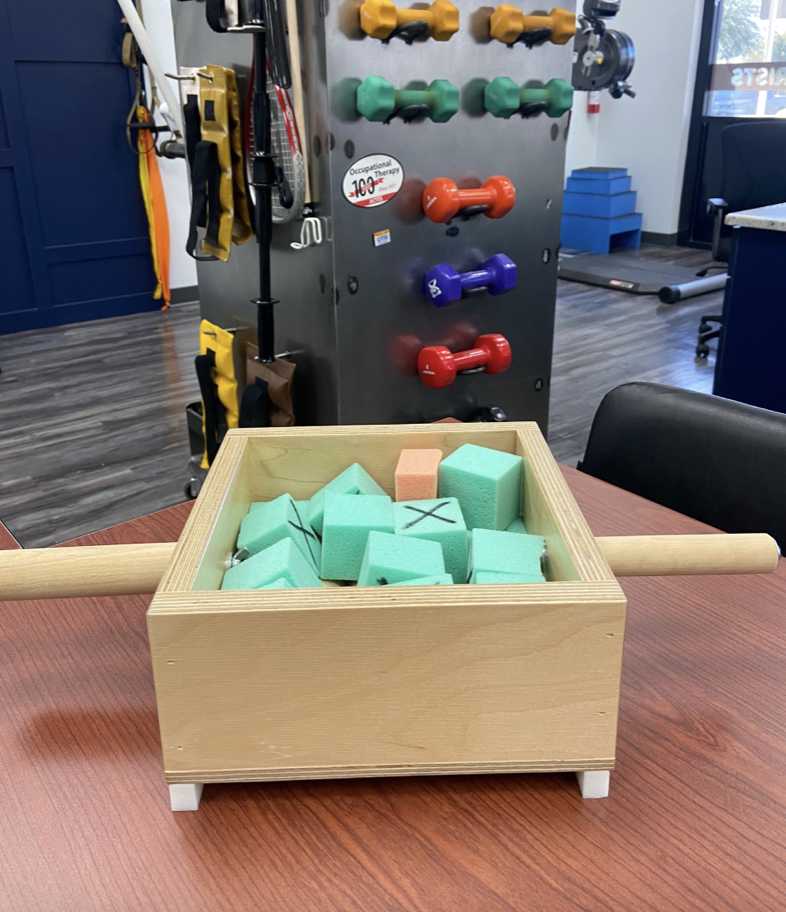
Tofthagen, C., Visovsky, C., and Rodriguez, R. (2017). Chemotherapy-induced peripheral neuropathy: An algorithm to guide nursing management. Clinical Journal of Oncology Nursing 17 (2), 138-144. DOI 10.1188/13.CJON.138-144
Kleckner, I. R., Park, S. B., Streckmann, F., Wiskemann, J., Hardy, S., and Mohile, N. (2021). Clinical and practical recommendations in the use of exercise, physical therapy, and occupational therapy for chemotherapy-induced peripheral neuropathy (peripheral neuropathy occupational therapy).
4 Comments
Leave a Comment
More To Read
Increasing Shoulder Range of Motion by improving Scapulohumeral Rhythm
Scapulohumeral rhythm is often the key component when treating shoulder conditions and the reason for the lack of total shoulder range of motion. This may also be a critical component in order to prevent shoulder conditions during rehabilitation of other upper extremity conditions such as distal radius fractures, tendon injuries, and elbow injuries. Scapulohumeral rhythm…
Read MoreTherapeutic Interventions and Contraindications of Cupping
By Kaylen Kallander Cupping therapy is used to apply negative pressure to a localized area of muscular or neurological pain to relieve nerve pressure and increase blood flow to an affected area. This modality is commonly used for athletes, but is also a frequent treatment in physical therapy, occupational therapy, or hand therapy. While cupping…
Read MoreSurgery & Hand Therapy Highlights for Dupuytren’s Disease
Dupuytren’s disease affects the fascia of the hand (Dupuytren’s fasciectomy hand). It is relatively common to encounter patients with Dupuytren’s condition, even if that is not the primary reason you are treating the patient. Patients often present with a nodule(s) in the palm of the hand, or they may even have a thickened cord running…
Read MoreSoft Tissue Healing in Pediatrics
By: Chelsea Gonzalez Why do pediatric clients often not require as much hand therapy for soft tissue injuries when compared to adults? The simple answer: Kids have very elastic soft tissue, which can return to its original shape and position after stretch. This elasticity is lost with time as collagen fibers expand and their internal…
Read MoreSign-up to Get Updates Straight to Your Inbox!
Sign up with us and we will send you regular blog posts on everything hand therapy, notices every time we upload new videos and tutorials, along with handout, protocols, and other useful information.


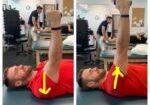
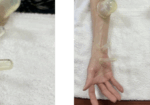

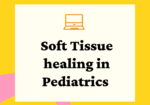

I have a patient with exactly this problem so great timing for this post! Some great ideas to make an interesting and fun programme for them.
Awesome! Glad it was helpful!
Hi Miranda!
Recently “Oncologist” published a paper entitled “Hand therapy interventions for the prevention of chemotherapy-induced peripheral neuropathy of the hands in patients with pancreatic cancer”.
Do you have experience on this prevention approach?
I have some chemotherapy patients in the hospital I work, in São Paulo, Brazil, and I’m doing some research to make as specific programme for them.
Thanks for the Post, they are always helpful. I’ve been learning a lot listening to you podcast too.
That is very interesting. I will have to check out that paper! I don’t have a lot of experience in this area. Let us know what you find out with your research. We would love to hear about it. Thanks for you kind words. We love sharing the information.